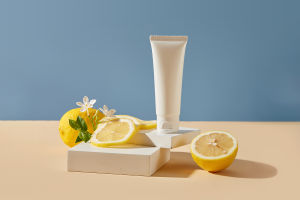Binoculars and telescopes often come with specifications that can be quite confusing, but understanding these numbers and specs can help users find the right product.
Many models of binoculars and telescopes include numbers like "10x50" or "8x42." The first number indicates the magnification; for example, 10x means objects appear ten times larger than they do to the eye.
Higher magnification allows for observing distant objects, but it also decreases stability. High-magnification binoculars require steadier handling or the use of a tripod to mitigate the effects of shaking.
For telescopes, magnification is often adjustable, with a wide range available, but it’s important to choose an appropriate magnification to avoid instability in the image due to excessive magnification.
The number following the magnification typically refers to the aperture diameter, which is the size of the front lens of the telescope, measured in millimeters. This number represents the amount of light that can enter through the lens.
A larger aperture diameter increases the brightness of the telescope, making it suitable for low-light conditions. This parameter is particularly important for stargazing, as more light is needed to see distant celestial bodies in the dark.
For example, a 50mm aperture will perform better than a 30mm one under poor lighting conditions. Therefore, if the usage environment is darker, opting for a telescope with a larger aperture is advisable.
Another key specification is the exit pupil diameter, calculated by dividing the aperture diameter by the magnification. The exit pupil diameter influences image brightness and clarity. Generally, the human pupil is about 2 to 3mm in diameter in bright light, expanding to over 7mm in darkness.
Therefore, if the exit pupil diameter of a telescope matches or slightly exceeds the diameter of the pupil, it can provide a bright and clear field of view. Telescopes with a smaller exit pupil diameter are better suited for daytime use, while those with a larger exit pupil diameter are ideal for low-light conditions.
Field of view is the width that the telescope can cover, usually expressed as the observable area at a distance of 1000 meters. A wider field of view allows for a broader perspective when observing objects, making it easier to quickly locate and track moving targets.
This feature is particularly useful for birdwatching or watching sports events. For observing static or distant targets, a telescope with a narrower field of view may be suitable for high magnification.
Eye relief also affects the experience for eyeglass wearers; telescopes with greater eye relief allow users to comfortably view the entire field of vision without needing to remove their glasses.
The lens coatings on binoculars and telescopes are vital for enhancing image quality. These coatings reduce glare and increase light transmission, ensuring brightness and contrast in images.
Generally, lens coatings can be single-layer (Coated), multi-layer (Fully Coated), or fully multi-layer (Fully Multi-Coated). Fully multi-coated lenses perform the best, effectively minimizing glare and increasing light transmission, making them ideal for complex lighting conditions. Choosing multi-coated or fully multi-coated telescopes is a smart choice for obtaining clear and bright image quality.
Waterproofing and fog-proofing are common features of telescopes, especially for outdoor use. Many telescopes are filled with nitrogen or argon, which helps prevent fogging on the lenses and ensures clear observations in humid and temperature-variable environments.
For users who love outdoor exploration, birdwatching, or stargazing, telescopes with waterproof and fog-proof capabilities are particularly important, as they can effectively extend the equipment's lifespan and maintain performance in extreme weather.
Finally, weight and portability are also important considerations, particularly for extended observation sessions. If a telescope is too heavy, it can cause arm fatigue during long periods of holding it, negatively affecting the viewing experience. In such cases, a lightweight, compact telescope can be chosen, or a tripod can be used to reduce the load.
The numbers and specifications of binoculars and telescopes are not just technical parameters; they are key to the actual user experience.
By understanding magnification, aperture diameter, exit pupil diameter, field of view, coatings, waterproofing and fog-proofing features, and weight, users can find telescopes that meet their needs, ensuring clear and stable visual experiences in nature observation, stargazing, or outdoor activities.


